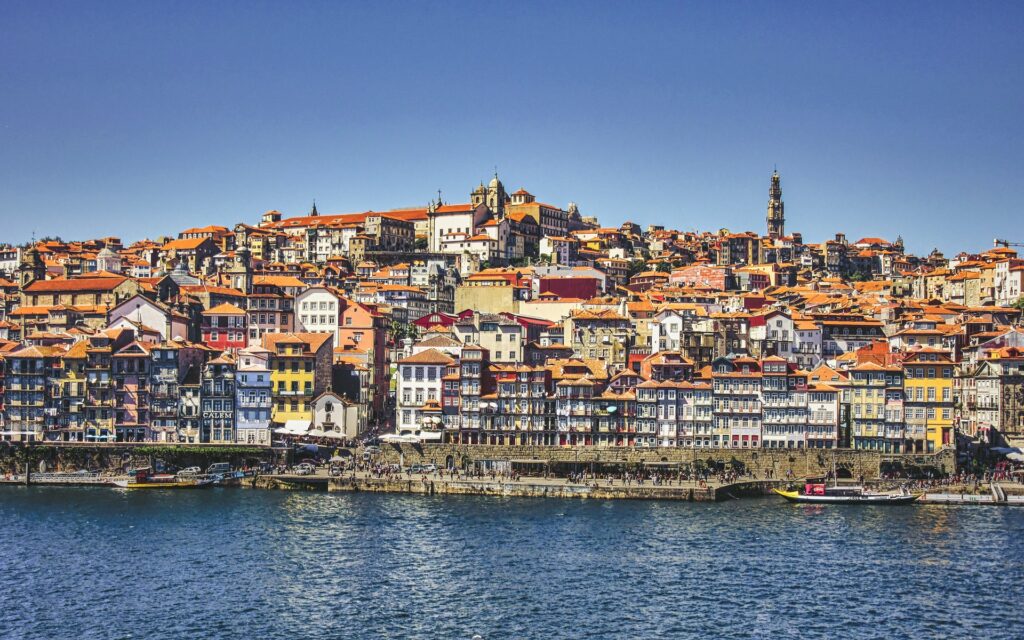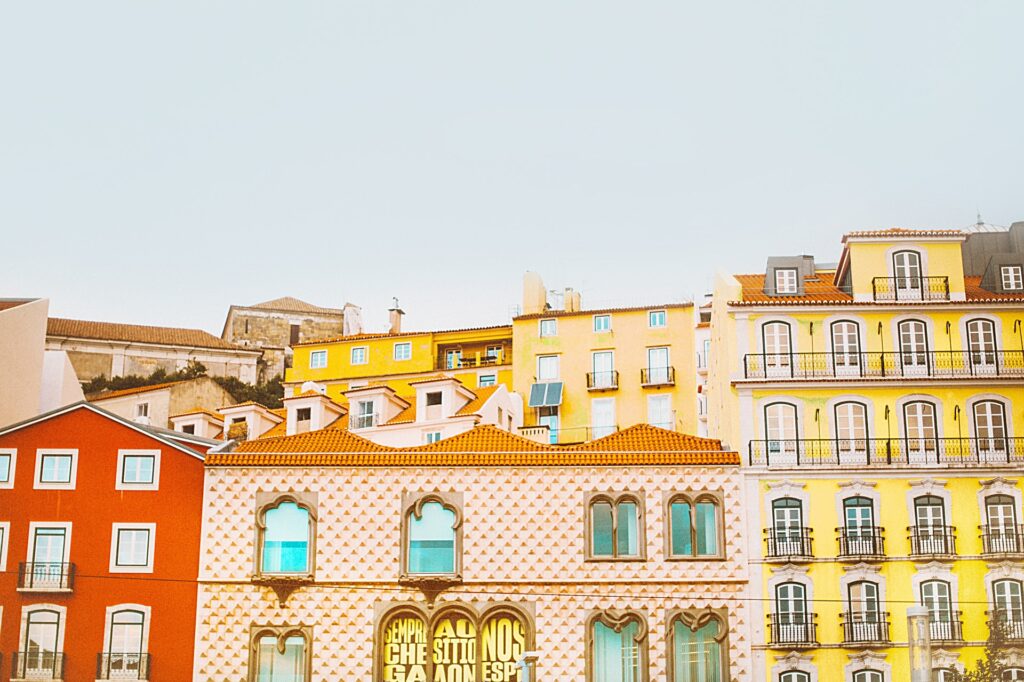Porto is famous for its bridges spanning across the Douro River and Porto’s metropolitan area. The town has a total of six bridges that are still standing today! And, in order to understand Porto better and which one is worth visiting – and why – you need to know what’s unique about them.
This is why this article will cover everything you need to know about them, including curiosities, historical facts, and what’s the best way to see each one of them.
Porto Bridges: Facts, Curiosities, and Why Visiting Them
Porto has been home to many bridges since the Roman settlements in Portus Cale.
The records show that the first bridge (“ponte” in Portuguese) built in Porto (in 1806) was actually created by using several boats with wooden planks placed between them across the river – called Ponte de Barcas.
Even though it was not a totally permanent bridge – it would be disassembled during times of floods –, this was the only connection there was between Porto and Vila Nova de Gaia (the city just across the river) for years.
Only in 1843, there was an attempt to build a permanent bridge called Ponte Pensil, which in English means suspension bridge. However, this one didn’t last long since after only a few years, people and authorities started worrying about its safety since several metallic components were oxidizing.
After that, the bridges of Porto, as we know, started being constructed.
Ponte Maria Pia: The Most Remarkable Bridge in Porto

The Ponte Maria Pia, named after the queen at the time, was Porto’s first permanent bridge and the most famous one. It was built to be a railway bridge, and its construction lasted less than one year (the works started on January 5th, 1876, and ended on October 31st, 1877, being inaugurated on November, 4th 1877).
It is the first great work of Gustavo Eiffel after his company won a contest held by Porto’s Municipality. Moreover, the Ponte Maria Pia is also one of Porto’s oldest bridges and, nowadays, an essential piece of its history.
It was used until 1991 when Ponte de S. João was inaugurated. At the time, its capacity was too limited since it only featured a single rail with a maximum speed of 20km/h. However, the bridge still stands, and it’s possible to see it if you go for a stroll along the river or in the high part of the city.
Ponte Luiz I: The Most Popular Bridge

The Ponte Luiz I – also called Ponte D. Luís, or in English, Luis I bridge –, named after the king back then, is Porto’s most touristic bridge because it is right in the city center. It was inaugurated in 1886 – on the king’s birthday –, and its works started not much long after the Maria Pia bridge was finished.
For its construction, an international competition took place, where the only demand was that it was what they called a double bridge – connecting the higher part of the city and the lower part of Porto using the same bridge – due to the Douro River margins’ topography.
The Ponte Luiz I – which looks a lot like Ponte Maria da Pia – was a project from Teófilo Seyrig, who also worked on the conception of the first permanent bridge built in Porto. Like its “sister,” it features iron beams that compose a parabolic arch.
Nowadays, you can cross the bridge on both levels on foot; however, the top is reserved for trains and pedestrians only, while the lower part is for both cars and pedestrians.
Ponte da Arrábida: Breathtaking Views from the Sea
Ponte da Arrábida – or Arrábida Bridge – is the first bridge in Porto to be built in reinforced concrete and held the world record as the largest bridge of this kind for quite some time.
It was built from 1957 to 1963 and is one of the most remarkable bridges in Porto due to its proximity to the sea. This is also the reason why it is the most exposed bridge to the forces of nature, such as strong winds and storms.
However, views from the bridge are breathtaking, whether you’re driving over it or climbing its arches on a guided visit.
Ponte de S. João: an Alternative to Ponte Maria Pia
Inaugurated in 1991, the Ponte de S. João was created to be used as a railway bridge instead of the Maria Pia Bridge, which at the time has become too slow and outdated since it was a single-way railway.
Just like in Ponte da Arrabida, the engineer responsible for this project was also Édgar Cardoso. However, his participation in the Ponte de S. João project was so controversial that he did not show up to its inauguration.
Ponte do Freixo: the Most Upstream Bridge
This is an eight-lane bridge created to ease the traffic on the Luis I and Arrábida bridges.
The Ponte do Freixo – or Freixo bridge, in English – is named after the area where it is located. It is the longest bridge in Porto and the lowest due to the region’s topography, which is not as steep as it is in Porto downtown.
Ponte Infante D. Henrique: the Most Modern Bridge

Ponte Infante D. Henrique is located in Fontainhas, between Maria Pia and Luis I bridge. Its architecture is not as impressive as the older ones; however, the area is pretty cool.
Near Infante D. Henrique bridge, you can go to the Miradouro de Fontainhas – Fontainhas viewpoint – and chill with the locals on a Sunday afternoon while enjoying the lovely view from the river.
It’s also from the Ponte Infante D. Henrique that you can have great views from both Luis I and Maria Pia bridges. If you want to take great photos of these two iconic bridges and Porto’s landscape, that’s where you should go for a walk.
Which Ones to Visit? A One-Day Itinerary Suggestion
The bridges in Porto are undoubtedly one of the city’s most iconic elements. There’s not enough time to visit them all in one day, so if you’re going for the first time, it won’t be easy to know which ones to prioritize and which ones are worth visiting.
We would suggest that you visit the Ponte Luiz I – the top part of it – cross it to see Porto from Gaia (across the river) and then go down through the streets of Vila Nova de Gaia. You can cross it back to Porto when you get to the bottom part of the Ponte Luis I bridge.
Then, take a walk along the river, grab a bite in one of the Farturas (food trucks) located there, and get to Ponte Maria Pia. It’s not possible to cross it nowadays, but you can still have a good look at the bridge created by Eiffel.
On the way back, climb the steep ramp that leads to Infante D. Henrique bridge, climb the steps among the traditional houses or take the cable car to get to the upper city. Then, once you get to Ponte Infante D. Henrique, walk at least until the middle so you can see both the Maria Pia and Luis I bridges, as well as the community garden on the banks of the Douro river, seagulls flying, and the boats and kayaks passing by.


